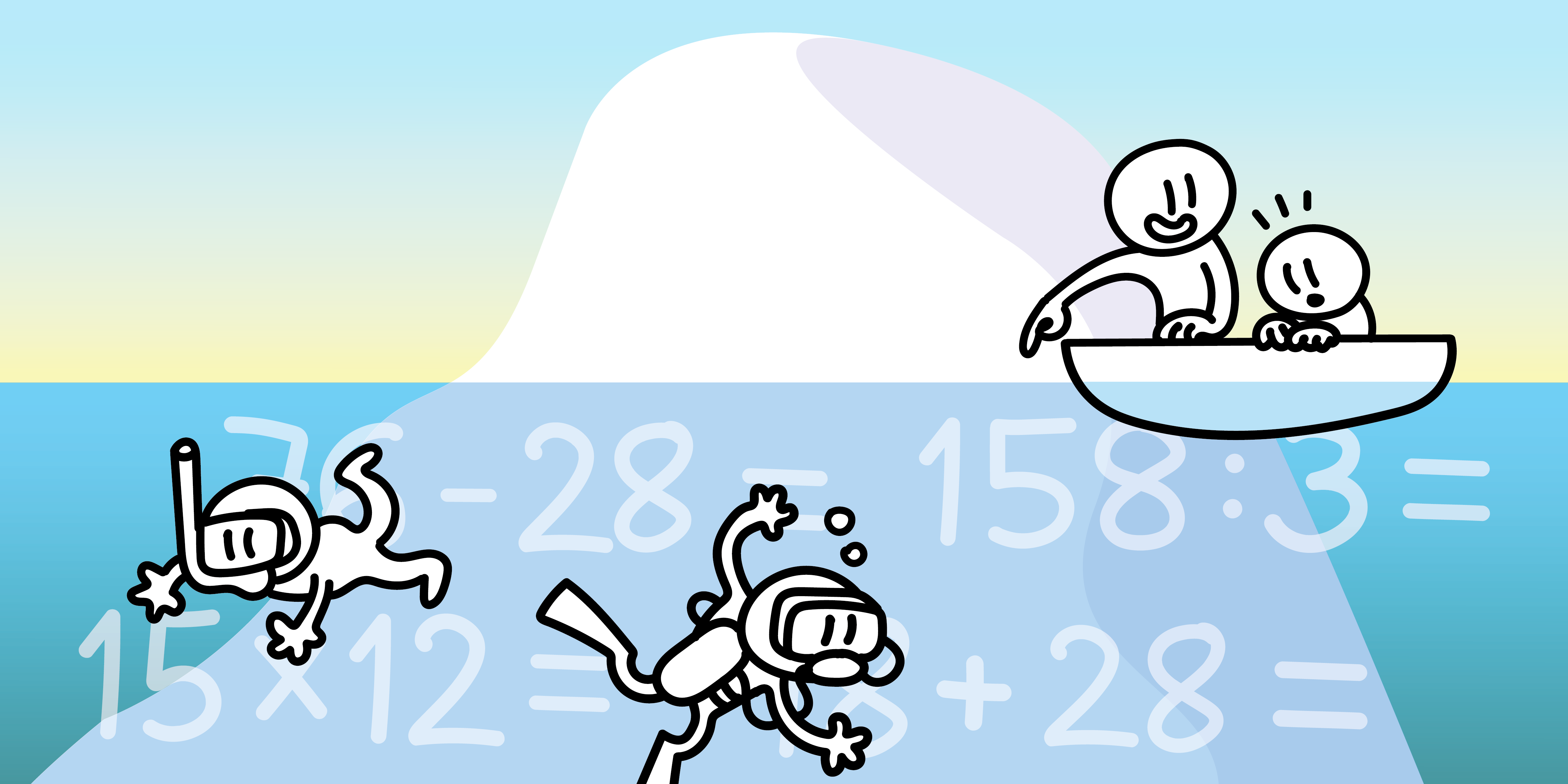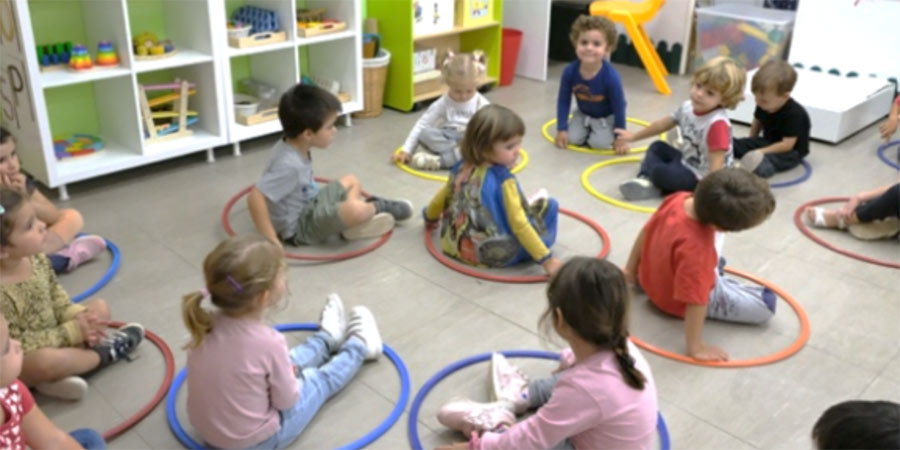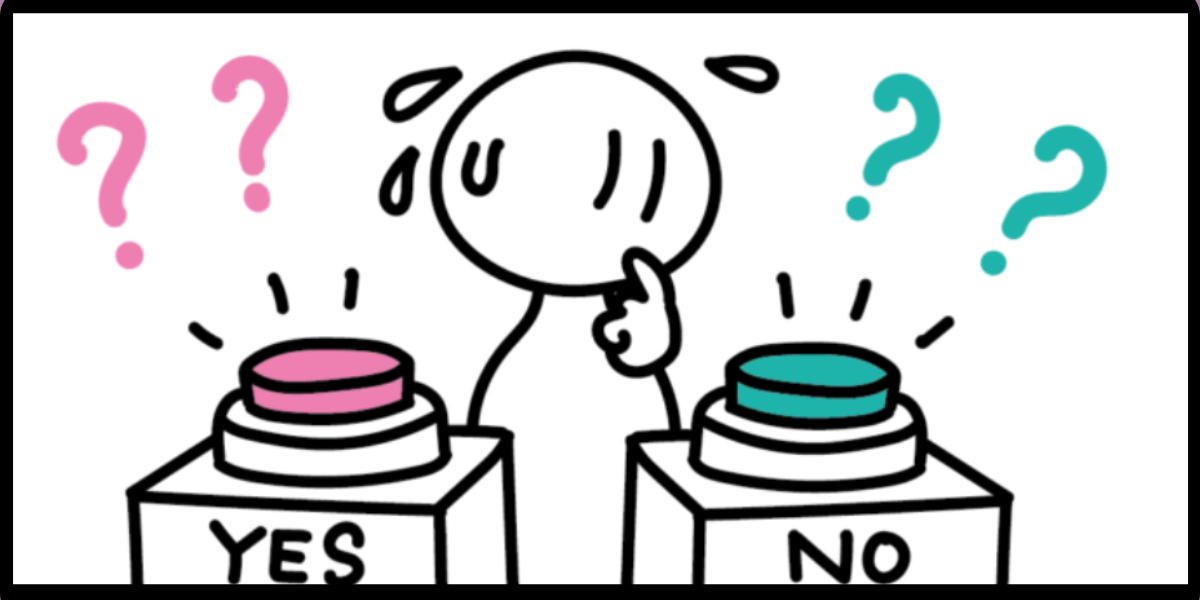Table of contents
Deducing facts from other known facts
What happens in the classroom?
Let’s look at the above in context: what happens in the classroom?
In a kindergarten classroom, for example, students learn to count objects, and this is the first step in thinking about known facts and derived facts. Mechanical, automated and fluent counting is the first thing a child should master. And how is it achieved? Through repetition, introducing the students to ascending and descending counting, counting in 2s, in 5s, using manipulatives, not using them, adding one, asking for the previous number, working on doubles… All these situations lay the foundations of the first known facts.
Let’s look at an example. To work on additive thinking, in kindergarten, we could ask the children how many units there are in total if we have two groups with 3 and 6 objects. Children, depending on their abilities, can use different strategies to solve the problem:
- Count all the objects in the two groups, without leaving any, from 1 to 9.
- Start with the first group (of 3 objects) and follow the number sequence: “…4, 5, 6, 7, 8 and 9”.
- Start with the largest group (of 6 objects) and follow the number sequence: “…7, 8 and 9”.
If a student is more proficient in counting and does not need to count in 1s, and also knows which pairs of numbers add up to 9 and understands the numerical meaning of the situation to be solved, another strategy would be:
- Change the sum to a nearby sum which has a result you already know: 3 + 6 is the same as 4 + 5, and they know that 5 and 5 adds up to 10, just like on their fingers. From this, it is easy to deduce that 4 and 5 add up to one object less, i.e. 9, since the number before 10 is 9.
When this happens, we see that the student is beginning to derive facts that they do not know from facts they do.
To encourage our students to get this far, we must guide them towards situations in our mathematical conversations:
- Often suggest starting counting from different numbers, not always from.
- Carry out decompositions of numbers.
- Emphasize sums by repeating them so that they can internalize them and encourage deduction during conversation.
We will start with strategies that emerge naturally in the classroom and from the students themselves, with well-rounded activities that allow each student to work on a challenge according to their own learning pace. And, of course, this should not only happen in kindergarten: the known facts-derived facts will continue to occur in different contexts and levels, throughout elementary and middle school.
How can we develop this skill?
An interesting resource to develop this skill is the mini-lessons suggested by Catherine Fosnot, which we can include as routines in our sessions. These are small exercises in which the objective is to give the result of simple operations based on another provided. What is relevant in this type of situation is the reasoning that the students provide:
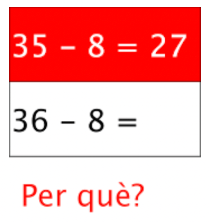
Why? “Because the result must be one greater than 27.”
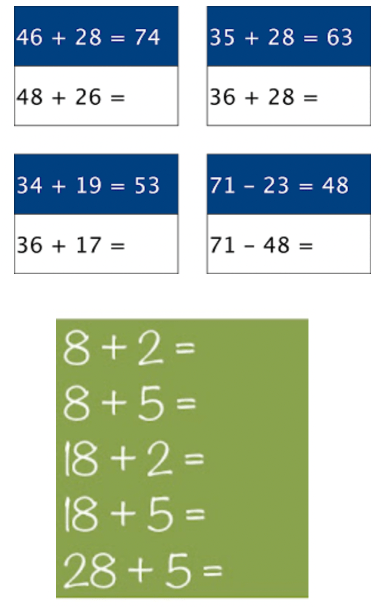
In this last example, it is useful and efficient to use the making 10 strategy: if students know that 5 + 8 is 13, they will be able to deduce that the result of the operations will end in 3 and will have 1 ten more than the first addend.

These mini-lessons not only work on additive thinking, but can also reference other content, such as percentages or statistics, to give continuity to the way of working in kindergarten and elementary school.
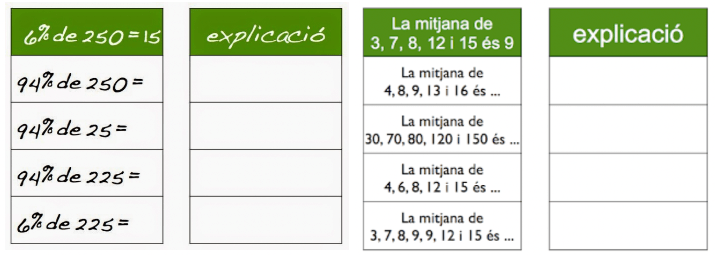
Students soon discover that this strategy allows for faster calculation and they become more confident as they practice it. As a result, they are less dependent on the calculator and use it only when necessary.
With all the above, we hope to have given you classroom examples which demonstrate the value of the deductive nature of mathematical activity, applicable at any level. If we are attentive and careful in mathematical conversation, we will see that there are many opportunities to practice calculations from deductive strategies, not just counting. Let’s not miss them! In addition, we will build the foundations of transferring this way of doing things to other content. Have you worked on this? What are your experiences?



